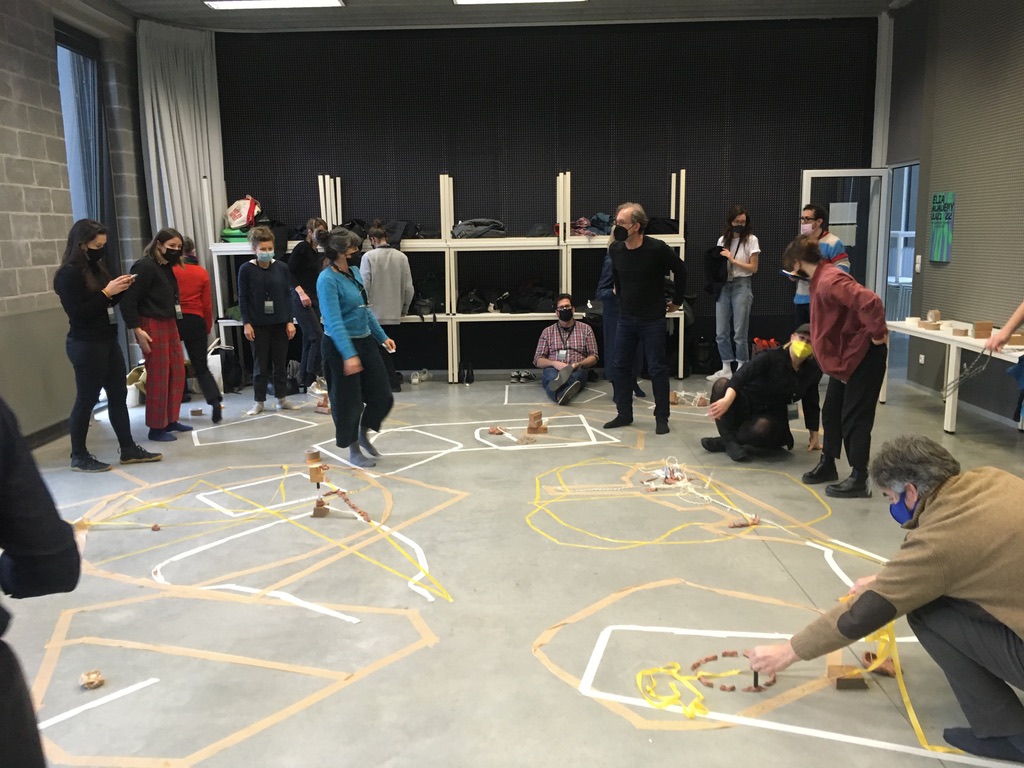Workshop at the Elia conference
This workshop, Imaginative dialogue with your own voices and the voices of the other was developed by Nathalie Beekman and Gudrun Beckmann for the ELIA conference in Brussel, February 2022.
It is an experiment in 4 steps, based on ideas and first findings of the PIMDI project.


Preparation
- You need a group of minimal 4 participants. You can do this dialogue with much more, up to 24, but then you need a huge space.
- You need a space where you can create dialogue spaces by using tape on the floor.
- You need material to give shape to three different voices: for example clay, wood, rope, wire and stuff to make something out of it. (very quickly)
- You need minimal 1 hour to do this experiment.
Process:
Step 1: Preparation for the dialogue: make your private space and prepare shape-giving to voices (10 minutes)
Use the tape to mark your own private space in the room.
In this space you give shape to 3 of your different voices using objects wood, clay, rope and wire) and/or sounds, and/or movements.
- Choose 3 of your voices (imagine yourself in different circumstances).
- Assign these voices to one of the given materials or sounds or movements
Step 2: Creation of a dialogue space (5 minutes)
Look at each other and at your own marked private spaces
Take your tape with you and start walking without speaking to a meeting point in the room
Start from this point to mark a dialogue space for the two of you, using the tape. Keep looking at each other regularly.
Step 3: Imaginative dialogue without words (10 minutes)
Now you start a dialogue without words with each other. You use your own voices as put in wooden- or clay objects, in sounds or in movements, to explore the different voices of the other person. If it is really needed at a certain point, you may use a limited set of words to make clear which characteristics you bring into the field.
Step 4: Mark the dialogue space again (5 minutes)
Watch and listen to how the dialogue between you has developed.
Now take your tape and mark the dialogue space again, according to the dialogue that has been taking place. Did the shape of it change? Does it overlap with the earlier dialogue space? Show it!
Rounding up:
The experiment is rounded up. Exchange your experiences in duo’s. (5 minutes)
Reflection with whole group (15 minutes)
– We sit in a circle on the ground
– Describe your experiences
– Was this an imaginative dialogue for you? How? Which elements made it imaginative?
